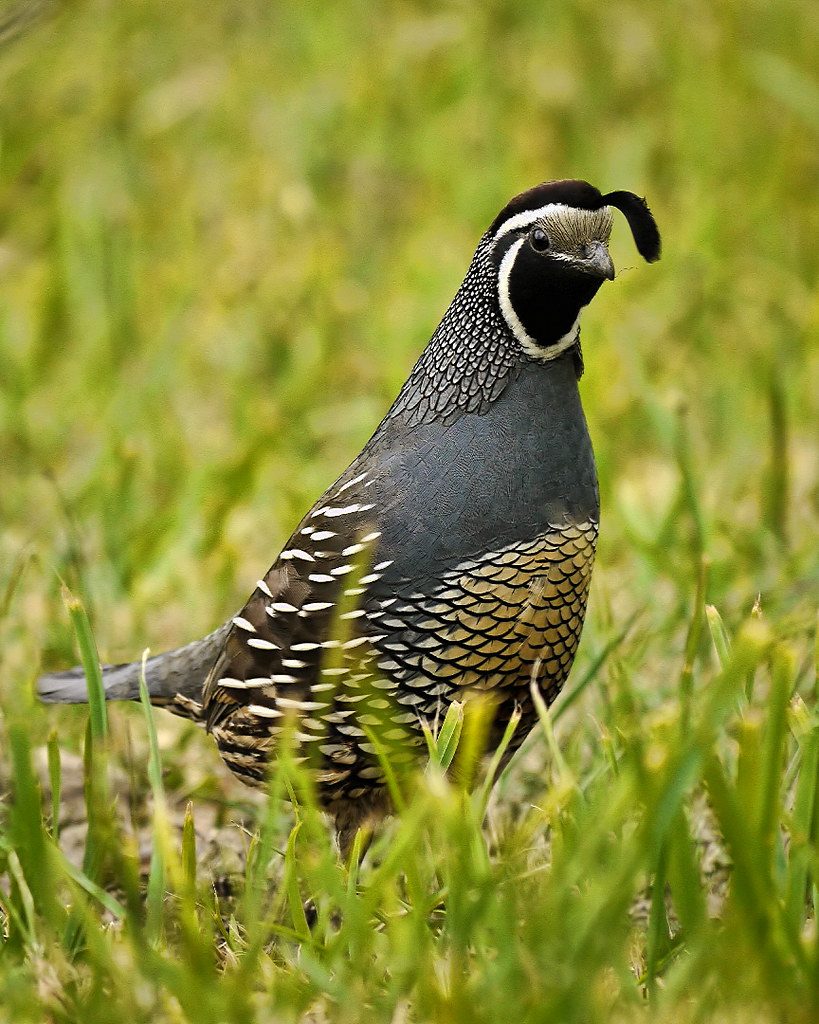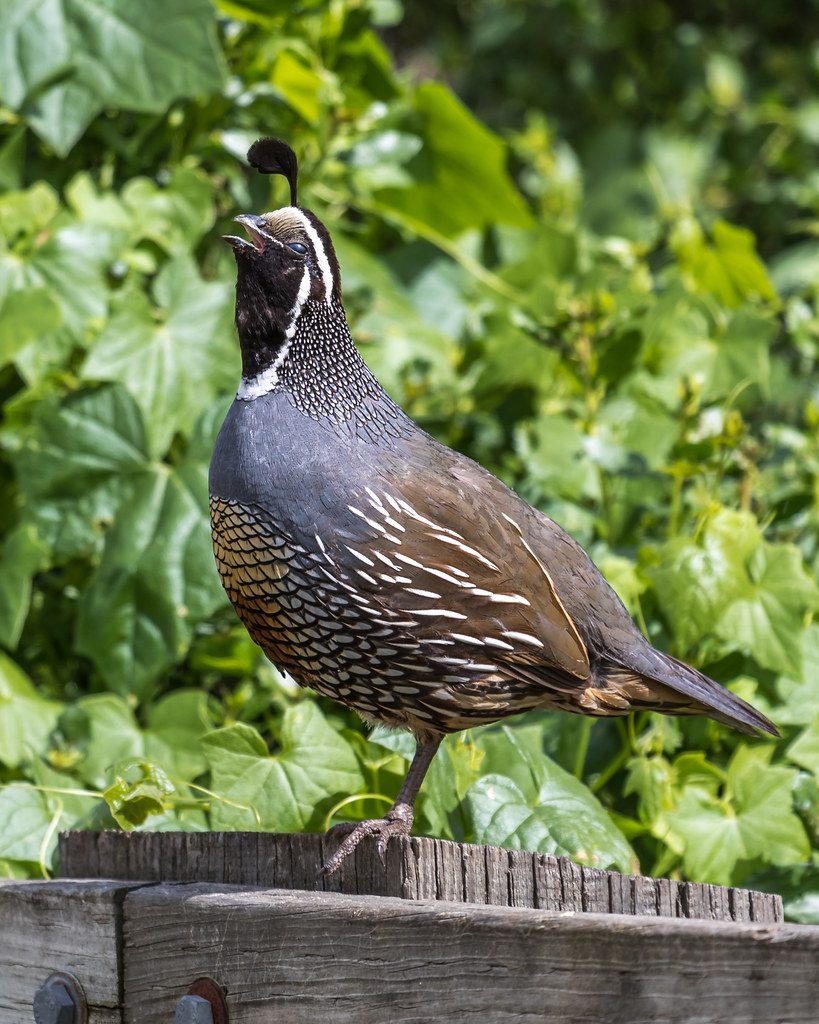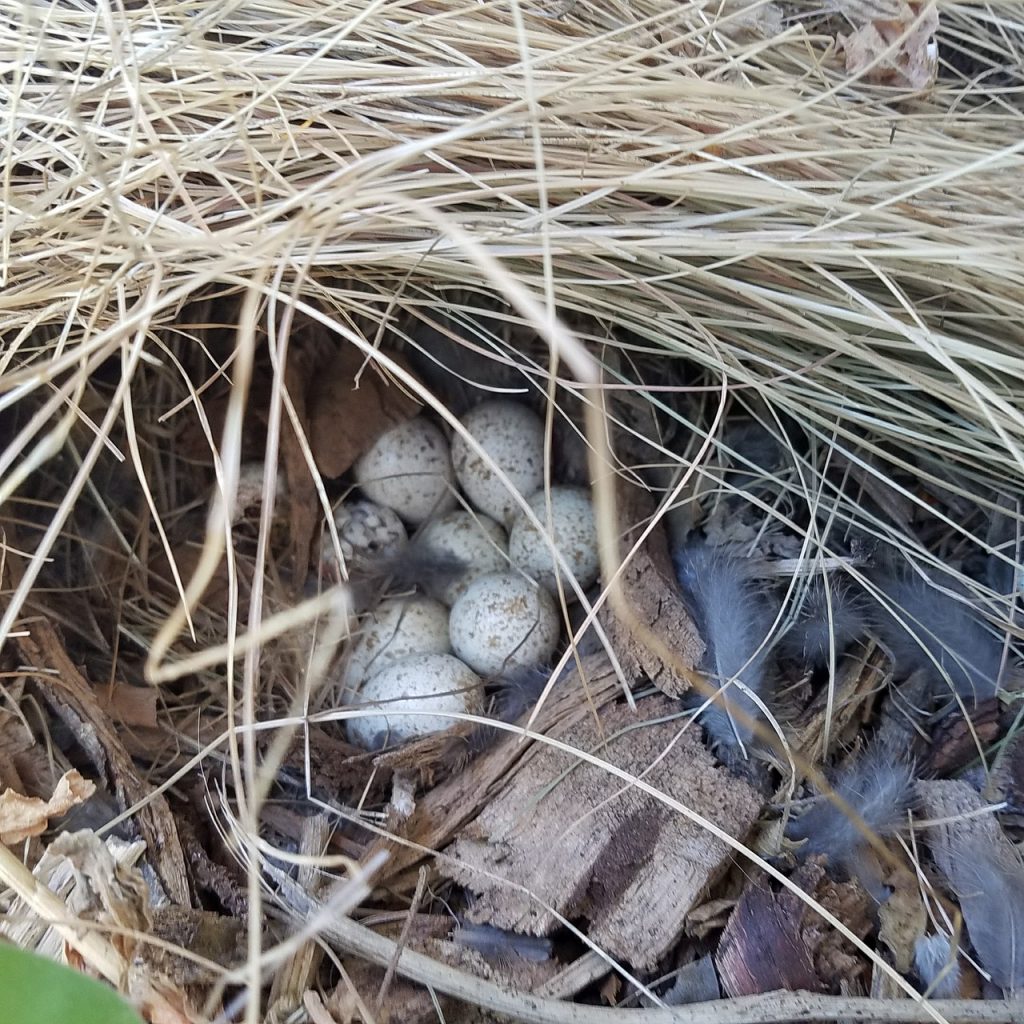All about Birds
A Guide To the State Bird Of California – The California Quail
The California Quail (Latin: Callipepla californica), is the state bird of California.
Its classifications are as follows:

- Kingdom – Animalia
- Phylum – Chordata
- Class – Aves
- Order – Galliformes
- Family – Odontophoridae
- Genus – Callipepla
- Species – Callipepla californica
We’ll go into detail about this bird’s distinctive features later.
For now, it’s worth pointing out its more unique characteristics.
The California Quail is a small, ball-shaped bird with an unusual, ‘teardrop’ plume on top of its head. The plume is sometimes affectionately called a top-knot.
Origin and evolution Of The State Bird Of California
California Quail are part of a larger group of Quail found exclusively within the Americas. This group of birds is commonly referred to as the ‘new world quails‘.
Interestingly, New World Quail (including the California Quail) is not considered to be related to other Quail species.
Scientists have classified them as belonging to their own family: Odontophoridae.
The debate over whether California Quails and others in the New World family belong to the larger family has raged for years.
Recently, however, DNA evidence has shown that these birds are unique and distinct from the ‘Old World’ family of Quail.
The leading theory on this species’ origin is that there was a genetic divergence around 65 million years ago when north and south America were isolated from one another.

The New World family of Quails consists of 9 different types with the first five found in South America and adapted to forest environments.
The other four types (including the California Quail) have adjusted to living on the edge of forests. These birds are found in North America.
Evidence suggests the California Quail’s evolutionary origin dates back only 2.8 million years ago.
The scientific data indicates this species had its origin in tropical America.
See Also: The Ultimate Guide To Birds Of New York
Behavior Of the State Bird Of California
California Quail are social creatures. During the months around Fall and Winter, they gather in groups of around 50. These groups are known as Covey.
While 50 birds is the average size of a Covey, they have been known to amass in groups as large as 1000 Quails!
When California Quails are gathered in Coveys, they like to copy each other’s behaviour and cooperate.
When a Quail in the Covey spots some delicious food, it will typically call out for the others in the Covey to join it in feasting. The same type of behaviour can be observed when a bird in the Covey spots danger.
California Quails have 14 distinct calls they use for different purposes. Their calls include courtship, re-gathering, mealtime and, danger.
A commonly heard California Quail call is the, “I’m over here” call to tell others where they are. This distinct call sounds a bit like “Chi-ca-go” or, “Cu-ca-cow”.
In early spring, the California Quails pair up to begin the breeding process. The Covey breaks up as the pair’s nest down in different areas and habitats.
The couples nurture their young as an isolated family until the end of the summer. At the end of the summer, the birds regroup to form a brand new Covey.
Evidence suggests that Coveys tend to cover a 17-45 acre territory. This equates to roughly one acre per Quail.
The range sizes vary quite a bit, it all depends on the quality of the brush cover available.
While Coveys are a tightly knit unit, small groups have been known to break off from the Covey for short periods. It has also been noted that, during winter months, the Coveys don’t move around as much.
A typical Covey only covers approximately 5 acres of their 45-acre territory during winter.

California Quail are foragers. Typically, they can be seen running around, pecking and scratching at the ground for food. They sprint and can burst into flight within moments if startled by a predator.
Predation rates can be pretty high for the California Quail. One of the biggest predators of the California Quail is Cooper’s Hawks.
Other predators include domestic Cats, Foxes, American Kestrels, Snakes, Gophers, Northern Harriers, Western Scrub-Jays and even Squirrels.
Lifestyle of the State Bird Of California
California Quails don’t tend to live for very long. Most of the birds die within their first year of life. The chances of a California Quail surviving five years are 1 in every 2-3000 birds.

California Quails have an interesting lifestyle when it comes to nesting. The home area for the nesting season covers approximately 3-10 acres per family.
California Quail are faithful to their mating partner throughout the nesting season. Having said that, they often pair up differently the next season!
During the nesting season, female and male California Quails have very different roles. The female is tasked with building the nest and feeding the young.
The nest is built undercover at ground level. The male’s job is to stand as still as possible, perched above the nest and communicate whether it’s safe or dangerous.
When it’s time to lay eggs, the females lay around 12-16 of them. The eggs are speckled and a creamy colour.
The mother sits on the eggs and incubates them for about 20-23 days. Infrequently, the mother may lay another set of eggs after hatching the first.
The chicks are rapidly capable of feeding for themselves and begin foraging for food only days after hatching.
While the chicks forage, the male keeps a close eye and calls out warnings when necessary. Typically, the male is so busy keeping watch; he loses weight during this phase of the year.
Unusually, around 12% of the California Quail chose to rear the young communally rather than as a single-family unit.
The communal parents tend to live longer and produce more chicks on average compared to their single-family counterparts.

California Quail chicks grow incredibly fast.
They fledge at just two weeks old. At 21-23 weeks old, they are just about into their adult plumage.
Amazingly, California Quail chicks are capable of short bursts of flight at only two weeks old!
Chicks reach full maturity at about ten months old when they too are capable of breeding.
In terms of diet, California Quail typically eat seeds. They also like to eat leaves, flowers, grains, acorns, and insects, amongst other things. Around 70% of everything they eat is vegetarian.
In terms of diseases, California Quail are reasonably robust. They have been known to contract Avian Malaria.
Another condition known to affect the species is Poxvirus infecting an Oregan population in the late 70’s.
Parasites that affect California Quail include Louse flies, Rhabdometra odiosa and, Acuaria Spinosa.
Population of the State Bird Of California
Population density varies quite widely between managed populations and truly wild populations.

In a controlled population, you would expect to find 12 birds per Hectare. In a truly wild setting, the population density is likely to be closer to 2.75 birds per Hectare.
California Quails aren’t a conservation concern at present, although hunting and disease do play a role in population decreases.
Individual states have set limits on how many can be hunted per person.
Other factors that contribute to the conservation status of California Quails include pesticides and breakdown of habitat.
Other physical characteristics
California Quails are round, and about 270mm in height for the males and 266mm for females.

Males have a bold black face with white rim and a dirty yellow tufty forehead.
The males have a grey breast and brown feathers with flecks of white and black.
Adult female California Quails look similar but slightly duller in color and no distinctive black and white face.
California Quails have varying weights depending on the time of year, where they are and other factors.
On average the birds weigh between 140-205 grams.
California Quails have grey bills, dark brown eyes, and grey feet. Their wings are approximately 105mm-119mm long, the male birds have slightly longer wings than females (about a 5mm difference).
Habitat
The California Quails are primarily found in Sagebrush scrub as well as Chaparral and Grassland oak.
California Quail have also been known to inhabit foothill woodland and humid forest lands.
Management
Before the 1800s, vast amounts of California Quail were trapped by the Native American population as they were valued as decorations and a source of food.

During the late 19th and early 20th century, commercial hunting, as well as trapping, played a significant role in population decline.
In 1901 things changed as commercial trapping was banned and limits were set as to how many birds could be hunted per person.
Research suggests that the California Quail population would make a complete recovery if 25% of its population were destroyed in a single season.
The California Quail is not considered to be threatened or endangered in the United States.
Proposed measures for maintaining their population have included a reduction in pesticides and a stop to habitat degradation.
See Also: The Birds of Colorado That All Bird Enthusiasts Will Want to Know About
FAQS
Where do California Quail live?

Typically, you’ll find California Quail on the West Coast of the United States of America. Places like California and Oregan are popular with the birds.
How long do California Quail live?
Most California Quails die within their first year of life; however, some have been recorded at six years old.
Why is California’s state bird, the Quail?
In the 1930s, the Audubon society adopted the Quail as it’s symbol for the state of California. In 1931, legislation was passed to make it official.
What does the California Quail represent?
The bird is known for its adaptability and its hardiness. Symbols apt for the state of California.
How many eggs do a California Quail lay?

On average, the California Quail lays between 1-26 eggs per clutch.
What do California Quails eat?
California Quails mainly eat seeds, although they have also been known to eat insects and other foods.

